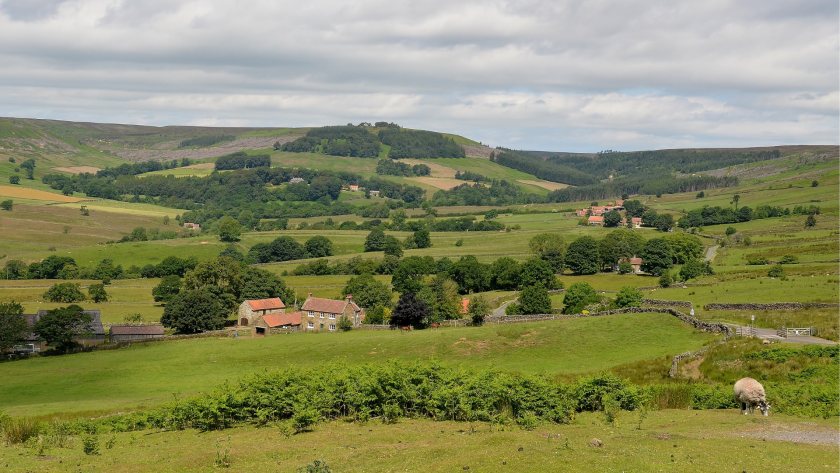
A project has been launched to help farmers see environmental and financial benefits of working collaboratively to improve the North York Moors National Park.
Almost 120 farmers and land managers are examining the implications of working together to find profitable ways to improve the environment.
It is part of a year-long, Defra-funded project investigating the way producers can protect and enhance the National Park’s iconic landscape.
Thought to be the largest project of its kind, farms are being asked to consider the financial and environmental impacts of joining forces and combine conservation efforts across the 1,436km2 National Park.
It’s hoped that by working together, producers will not only boost the natural environment, but also find ways to support their income and help long-term business viability.
The project is being led by the North York Moors National Park Authority with support from Fera Science Ltd.
The results will feed into the design of Defra’s Environmental Land Management Scheme (ELMS), the development of Fera Science Ltd’s LAND360 natural capital assessment service, and inform wider work of the National Park.
“Because of the rapidly changing policy landscape, we want to encourage farmers and land managers to work together to provide the ecosystem services everyone is seeking,” said Dr Glyn Jones, Fera's head of science.
“By working collaboratively with farmers, planners, and local authorities, we will be able to look at the opportunities available, and assess what this means when making environmentally and financially sustainable land management decisions.”
Researchers will soon use remote sensing technology to carry out a detailed analysis of the landscape —which includes heather moorland, forests and coastline — to identify areas farmers could make changes to improve biodiversity, store carbon, or reduce flooding.
From there, they are planning to hold workshops to help farmers assess the financial implications of land management changes they could make.
They will also work with Yorkshire Water, local developers and local authorities to understand how they can help to drive improvements and the scale of their demand for carbon and biodiversity.
“Ultimately, we want to see farmers deciding to work together to incorporate some of these environmental changes into their land management,” said Mr Jones.
“At the moment agricultural prices are high, so a lot of farmers don’t necessarily see the financial benefits of making these changes.
“This project is helping to look at the trade-off between those things: What prices they could get for biodiversity credits or carbon, what opportunities are on offer, and what they could mean for their decision making.”
For many farmers, improvements could be as simple as reinstating hedgerows, planting flower margins for pollinators, or planting trees and shelter belts to reduce the flow of water.
“Working together will allow farmers and land managers to do these kinds of things more easily at scale," Mr Jones added.
"Farm boundaries don’t respect habitat boundaries, so if a farmer makes some enhancements themselves, they have to stop at the edge of the farm, when ecologically it might not make sense.
“It’s possible to get a balance of ecological and social sustainability, while also producing food,” he said.
